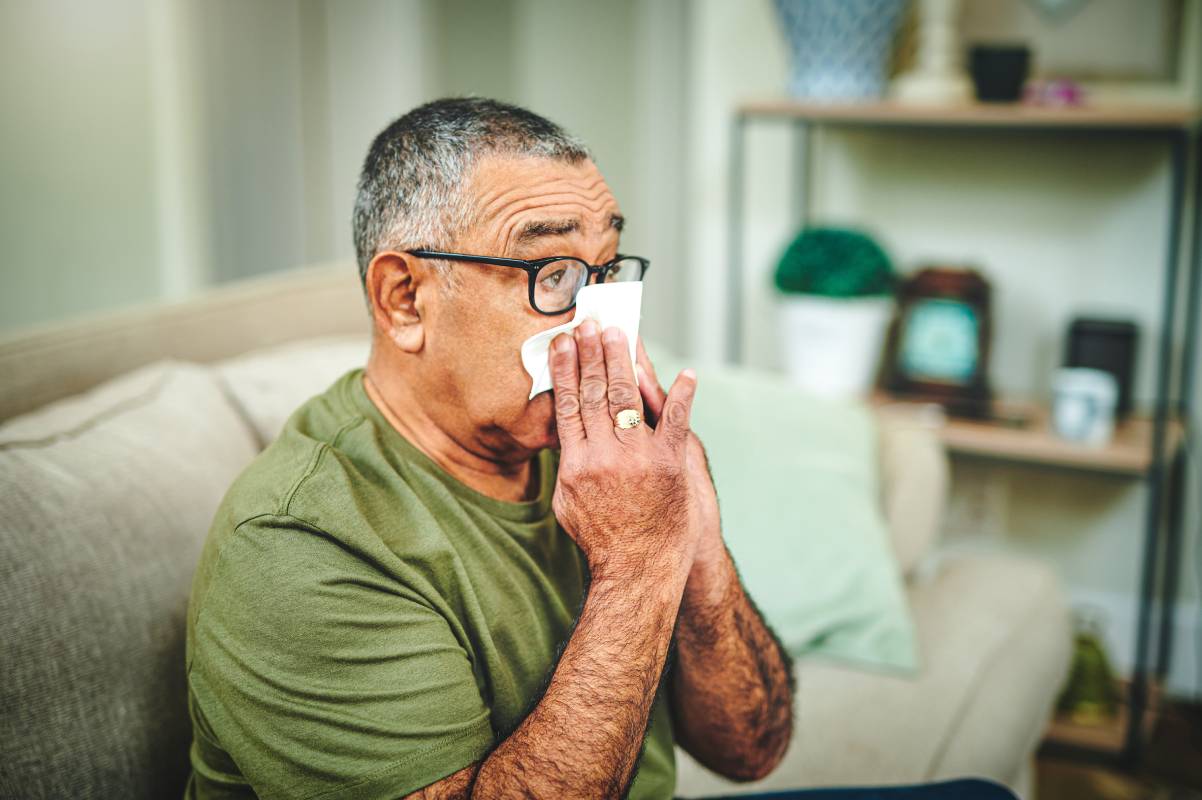Seasonal Infections: What to Know About the Common Cold
November 21, 2022
The common cold refers to a mild respiratory infection that can be caused by a number of different viruses. Each year, the average adult experiences 2-4 colds, and the average child experiences 6-8 (4). Indeed, time missed from work and school due to the common cold can add up to significant economic losses. In the northern hemisphere, cases increase in the autumn and peak during the winter (4). As the days become chillier, community members should be well-informed on the common cold in order to avoid becoming ill and to be able to care for yourself if you develop the sniffles. Here is what to know about the common cold.
Many different viruses are responsible for the common cold; these include respiratory syncytial virus, adenovirus, common human coronaviruses, human metapneumovirus, and human parainfluenza viruses (2). However, the most common viruses that cause the common cold are rhinoviruses, which are responsible for at least 30-50% of all respiratory illnesses (4). In fact, rhinoviruses may cause up to 80% of all respiratory infections during the peak season (4). Additionally, mild cases of the flu may be misidentified as the common cold, as symptoms can clinically overlap (4).
There are over 100 different serotypes of rhinoviruses (4). When one of these infects a person, the virus is deposited in the anterior nasal mucus membrane, which lines the entire nasal cavity (4). From here, the virus travels toward the throat, where, in the lymph tissues of the adenoid, they penetrate the epithelial cells on the surface (4). The onset of symptoms can be as soon as 10-12 hours after the virus enters the nasal cavity (4). Most patients will recover from the common cold within a week, although coughing can last two to three weeks (2). Symptoms include sore throat, congestion, sneezing, malaise, fatigue, and cough (2). Fever is common in children, but unlikely in adults.
A key part of what to know about the common cold is that sometimes, the viral infection that causes a cold also results in bacterial complications. For children, middle ear infection, or acute otitis media, happens frequently along with the common cold (2). Additionally, the common cold may induce sinusitis, pneumonia, or worsening of asthma in both adults and children (4).
Antibiotics are ineffective for treating the common cold and may even induce negative side effects such as antibiotic resistance (1). However, other treatments may be utilized to ease symptoms and potentially shorten the duration of illness. For instance, anti-inflammatory drugs may reduce the severity of sore throat, headaches, and fever. Antihistamines and nasal and oral decongestants can also be used to decrease sneezing and nasal congestion in the short term (1).
Those who are sick with a cold may take vitamin C, zinc, or echinacea to support recovery. However, the effectiveness of vitamin C has low-quality evidence in scientific literature. Indeed, therapeutic vitamin C did not have a significant effect on the length or severity of illness (5). However, in those who are undergoing severe, short-term physical stress—such as marathon running—vitamin C is thought to help prevent becoming ill (5). Zinc does have more substantial research to corroborate its effectiveness. At least 75 mg of zinc administered within 24 hours of symptom onset has been shown to reduce the duration of common cold symptoms in healthy individuals (7). This is because zinc prevents viral replication (7). Similarly, echinacea products have been shown to slightly reduce the risk of contracting the common cold, although overall evidence quality is weak (6).
Prevention of the common cold begins with simple, daily hygiene. Wash your hands frequently, avoid touching your face, cover your coughs and sneezes, and stay home from work or school if you are feeling ill (3). Getting plenty of sleep, rest, and hydration are key to a speedy recovery (3).
References
- Arroll, Bruce. “Common cold.” BMJ clinical evidence vol. 2011 1510. 16 Mar. 2011
- “Common colds: Overview.” Institute for Quality and Efficiency in Healthcare, 8 Oct 2020, www.ncbi.nlm.nih.gov/books/NBK279543/
- “Common Colds: Protect Yourself and Others.” Center for Disease Control and Prevention, 29 Nov 2021, www.cdc.gov/features/rhinoviruses/index.html
- Heikkinen, Terho, and Asko Järvinen. “The common cold.” Lancet (London, England) vol. 361,9351 (2003): 51-9. doi:10.1016/S0140-6736(03)12162-9
- Hemila, Harri and Elizabeth Chalker. “Vitamin C for preventing and treating the common cold.” Cochrane Database of Systemic Reviews, 31 January 2013, doi: 10.1002/14651858.CD000980
- Karsch-Völk, Marlies et al. “Echinacea for preventing and treating the common cold.” The Cochrane database of systematic reviews vol. 2,2 CD000530. 20 Feb. 2014, doi:10.1002/14651858.CD000530.pub3
- Sing, Meenu and Rashimi R Das. “Zinc for the Common Cold.” Cochrane Database of Systemic Reviews, 18 June 2013, doi: 10.1002/14651858.CD001364